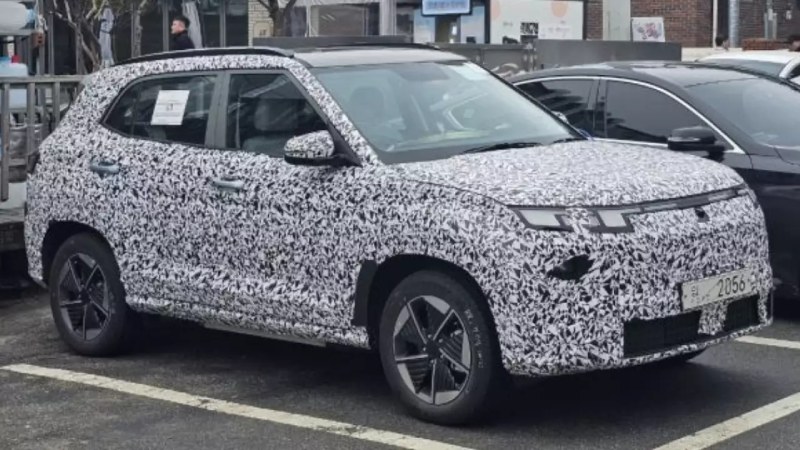Hyundai is getting the Creta EV ready for the general market. The Tiago EV and Nexon EV have a similar ICE to EV transition strategy. In 2025, the Hyundai Creta EV is expected to go on sale. It will compete against rivals such the Toyota eVX, Mahindra BE.05, Maruti eVX, and Tata Curvv EV.
Design of the 2024 Hyundai Creta EV:
A large part of the skin resembles the new ICE Creta facelift, as seen in The Fat Biker’s video. A redesigned bumper and closed-off grille are just two of the EV-specific changes that will be made. We can see a front charging port on the Creta EV’s fascia. The Creta EV features a sculpted bonnet, sequential turn indicators, horizontally stacked LED positioning lamps and DRLs, and other lighting elements.
For the side profile, the Creta EV will receive new aero alloy wheels. For optimal range, these aerodynamic components also help to lower the SUV’s air drag coefficient. The rear profile has a curved spoiler with a high-mounted LED stop lamp, sequential turn signals, and connected LED tail lamps.
The majority of the features within will be taken from ICE Creta. The Creta electric model has a slightly modified steering wheel with four dots, similar to the Hyundai Ioniq 5, in order to stand out.
Expect features like front ventilated seats, dual-integrated infotainment and instrument screens, and a controlled by voice smart panoramic sunroof. The Bose premium sound system and dual-zone automated climate control are standard on the Creta EV. A wide range of ADAS technologies will be included in the safety kit, as this spy video’s bumper-mounted radar confirms.
Performance and specifications of the Creta EV:
The EV version will try to provide an experience that is comparable to that of the ICE Creta, which is well-known for its exciting performance. Expectations aim for a 45-kWh battery pack for the Creta EV. It has a potential range of about 450 kilometers. In real-life scenarios, the range may be between 250 and 300 km. The advanced regen system of the Creta EV will contribute to its increased range.
Because it is a derived EV rather than a born EV, as can be seen in the video, the battery pack hangs down quite a bit. Leading battery maker Exide and Hyundai and Kia have signed a Memorandum of Understanding. There may be plans to produce battery packs locally for Hyundai and Kia’s planned electric vehicles. Owners of Creta EVs will benefit from shorter stops at charging stations as well as rapid charging assistance.
The FWD version of the Creta EV will come with a single electric motor fixed to the front axle. It is possible to borrow the electric motor from the new Kona. This motor produces 255 Nm and 138 horsepower. There are still a few unanswered questions concerning Creta EV. The SUV’s maximum speed, acceleration, charge duration, etc. The upcoming months will see the discovery of more secrets.
Topics #Autmobile #Creta #Creta EV #Hyundai #Hyundai Creta #Hyundai Creta EV #Manufacturing #news #Nexon #Tata #Tata Nexon











